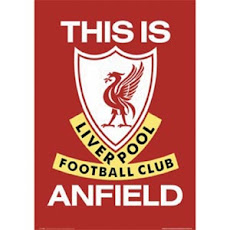This column appears in the Monday April 4, 2011 edition of the Business Mirror. I write a column for Business Mirror every Monday and on other days of the week, I contribute articles. I also write for Rebound, Philippines Free Press, and Chalk.
Three Back and to the Future
by rick olivares
They say that there’s power in threes.
There’s the Triangle Offense that has seen 11 NBA championships in the last two decades. There’s the now basketball term of “The Big Three”. There were also the Halliwell sisters who charmed their way past warlocks and other demons. And many of the world’s religions contain triple deities.
In the beautiful game, there’s the use of three central defenders that seems to be raising its head here and there like some three-headed monster.
In the last UAAP Men’s Football Tournament, I found it a curious departure for the University of Santo Tomas Growling Tigers to play three center backs (Ronald Batisla-Ong, David Basa and Noel Francisco) in a 3-5-2 formation instead of going with a traditional back four while running the conventional 4-4-2. While in conversation with many other coaches in the league (as well as past national coaches), they expressed dismay with the formation and felt that it opened up UST to counterattacks.
There’s right and there’s wrong. Unofficially, the Tigers led the league in the last two years with scoring opportunities and in goals scored. Ultimately, the goals were not enough as UST lost the last two UAAP Finals. And personally, I think it’s daring. Kudos to Tigers head coach Marjo Allado for the cojones to run that the finals losses notwithstanding.
Detractors will argue that the formation backfired on UST as several goals were scored on them from quick counters using the long ball (see UP’s Jinggoy Valmayor beat the offside trap for a goal) and breaking down a center back to go one on one with the Tigers keeper (see FEU’s Jess Melliza take national player David Basa to school). While Basa is clearly a very good defender, he cannot be singled out for the defensive lapses. The culprit lies ultimately on the midfield wingers who are supposed to race back to shore up the defense. Brazil’s Roberto Carlos and Cafu played this role to near perfection.
In UST’s second match of the tournament, they were up against De La Salle University that a few days earlier throttled Ateneo 5-1. Worried about La Salle’s offensive might, the Tigers switched to the more conventional 4-4-2 and the result was a 1-1 draw. But in nine of UST’s 11 matches for the year, they ran the 3-5-2 formation to relative success.
The Philippine Men’s National Football Team, under German head coach Michael Weiss, has used three defenders (in Aly Borromeo, Anton del Rosario, and Rob Gier/Jason Sabio) during its current AFC Challenge Cup campaign.
What’s with the three defenders?
Theoretically in the face of an attack, two of the defenders play a central back role with the middle man acting as a sweeper to prevent through balls and swift incursions. It gives flexibility on the attack so teams can have an extra libero in the middle and more attacking wingbacks. These wideouts are the workhorses of this system as they run up and down the flanks to provide support or help.
And looking at the world football stage, I struck me that the three defensive back formation seems to be run a little more nowadays.
Liverpool under Kenny Dalglish operates it. And it has done the Reds well. Early in the 2010-11 season, LFC flirted with the relegation zone. Now, under Dalglish and while running a 3-5-2 (with Daniel Agger, Martin Skrtel, and Jaime Carragher in the back), they find themselves playing better. They are now in sixth place in the English Premier League with a chance to climb up to fifth or if they are really lucky, fourth place. Now wouldn’t that be a hoot? They’d be back in Champions League play.
Italian club Napoli has not lifted the Serie A trophy since Diego Maradona starred for the team. Nowadays, under head coach Walter Mazzarri who once played center back from Empoli FC that has gone up and down the first and second divisions in Italy, the Azzurri are running the 3-4-2-1 formation with three defenders in Salvatore Aronica, Emilson Cribari, and Hugo Campagnero.
Last season, Napoli were in sixth place but this current campaign, they occupy third place and remain within striking distance of AC Milan and Internazionale which occupy first and second spots in the chase for the Scudetto. The 3-4-2-1 formation has given the team much success with Uruguayan striker Edinson Cavani who has 22 goals in the Serie A so far showing the way. Cavani, who only scored 13 with Palermo last year is second only to Udinese’s Antonio Di Natale who lead the Serie A with 25 successful strikes this campaign.
Want proof of Napoli’s further success? As of this writing, they have given up only 27 goals. That’s the second best defense after AC Milan which has surrendered 22 thus far of their own.
Liverpool in the meantime are in eighth place in team defense as they have given up 38 goals (Chelsea has surrendered the fewest at 25). They are 6-1-3 since the return of Dalglish in Premier League play. Five of those wins were clean sheets for the Reds. On the offensive end, they have scored 18 goals and given up 11. I would not want to compare the statistics of Liverpool under Roy Hodgson (who got his revenge over LFC with a 2-1 win by West Bromwich Albion two days ago) as they had different players and tactics then. But make no mistake, the Reds are playing better now.
Now unless UST, the Azkals, Liverpool, or Napoli win titles anytime soon using three defensive backs, I don’t see squads ditching the still de rigueur 4-2-3-1 that many national sides and clubs run (you know imitation is the sincerest form of flattery when everyone is trying to play like Spain and Barcelona). But I still think that it’s great that some are willing to fly in the face of conventional wisdom and use a formation that has turned out positive results.
You could say it’s almost mystical. Like there’s a higher power to it.











Rick,
ReplyDeleteCorrect me if I am mistaken, but Brazil did win the FIFA 2002 World Cup with three centerbacks, right?
BTW, they also had three Rs then. The power of three!
Yes, that's right. That's why I mentioned that Brazil perfected that with Lucio and Edmilson and one more guy I cannot remember. For a while Roberto Carlos was the center back but they switched him to the wings along with Cafu.
ReplyDeleteGermany played a similar formation in that World Cup with Oliver Kahn anchoring the D.
ReplyDeleteThat German squad had one of my fave players at that time in Didi Hamman. Miroslav Klose made his World Cup debut as did Gerald Asamoah for Germany.